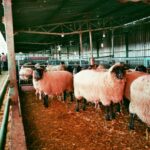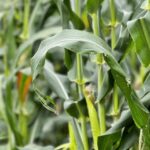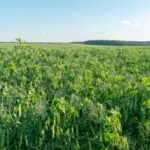Extreme weather events, including droughts, floods, storms, and heatwaves, have become more frequent due to climate change. These events pose significant challenges to farmers, threatening crops, livestock, and infrastructure. Preparing your farm with the right equipment is essential to mitigate the risks of extreme weather and ensure productivity and sustainability. Here’s how you can prepare your farm for various weather challenges.
Conduct a Risk Assessment
Before investing in equipment, identify the weather patterns that are most likely to affect your farm. Analyze your farm’s location, soil type, and current infrastructure to determine vulnerabilities to drought, floods, or storms. This assessment will help you prioritize your needs and invest in appropriate tools.
Invest in Irrigation Systems for Drought Management
Droughts can severely impact crop yields and livestock health. Efficient irrigation systems are essential to conserve water while ensuring your crops receive adequate moisture. Drip irrigation systems are ideal for reducing water wastage, while pivot irrigation can cover larger areas efficiently. Install rainwater harvesting systems to collect and store water during rainy seasons for use during dry periods.
Flood Control Equipment
Floods can destroy crops, erode soil, and damage farm infrastructure. Equip your farm with drainage systems to channel excess water away from fields and structures. Use portable water pumps to remove standing water from low-lying areas. Raised planting beds and contour farming can also minimize waterlogging in crop fields.
Storm-Resistant Structures
Storms can damage farm buildings, uproot crops, and harm livestock. Reinforce structures like barns, silos, and greenhouses with storm-resistant materials. Use windbreaks such as rows of trees or fencing to reduce wind speed and protect vulnerable areas. Anchoring portable equipment and securing loose items can prevent damage during high winds.
Temperature Control Equipment
Extreme heat or cold can stress crops and livestock. During heatwaves, provide shading for livestock with shelters or shade nets. For crops, install cooling systems like misting systems or shade cloths to reduce heat stress. In cold weather, use insulated barns, heaters, or frost protection systems like row covers and tunnels to shield plants and animals from freezing temperatures.
Backup Power Sources
Extreme weather often leads to power outages that can disrupt critical farm operations like irrigation and ventilation. Invest in backup power generators to ensure essential systems continue to function during blackouts. Solar-powered systems can also be a reliable and sustainable energy source.
Soil Management Tools
Healthy soil is more resilient to extreme weather. Use soil-testing kits to monitor soil health regularly and apply organic matter to improve its water retention and drainage capabilities. Consider equipment like plows and cultivators to enhance soil aeration and reduce compaction, making it better able to withstand floods and droughts.
Early Warning Systems and Monitoring Equipment
Install weather monitoring equipment to track local weather conditions in real time. Devices such as rain gauges, anemometers, and soil moisture sensors provide valuable data to help you make timely decisions. Pair these with early warning apps or systems to stay informed about impending extreme weather events.
Crop-Specific Protective Equipment
Certain crops may require specialized equipment to withstand extreme weather. For example, hail nets can protect fruit trees from hailstorms, while plastic mulches can conserve soil moisture during droughts. Invest in protective coverings and other tools tailored to your crops’ needs.
Emergency Kits and Supplies
Extreme weather can strike suddenly, so being prepared is crucial. Maintain emergency kits containing essential items like first aid supplies, flashlights, batteries, and tools for minor repairs. Keep spare parts for your farm machinery to ensure quick fixes in case of damage.
Plan for Livestock Safety
Extreme weather can be life-threatening for livestock. Build elevated shelters to protect animals from flooding. Ensure proper ventilation in barns to avoid heat stress during hot weather. Maintain an adequate stock of feed and water to sustain livestock if weather conditions disrupt supply chains.
Training and Preparedness
Train farm workers on how to operate specialized equipment and follow safety protocols during extreme weather. Conduct regular drills and update your contingency plans based on lessons learned from past weather events.
Preparing your farm for extreme weather with the right equipment is a proactive approach to safeguarding your investments and ensuring long-term sustainability. By investing in irrigation systems, storm-resistant structures, monitoring tools, and other essential equipment, you can mitigate risks and build a resilient farming operation. Planning ahead and staying informed will empower you to navigate the challenges of extreme weather effectively.
Join 'Farmers Mag' WhatsApp Channel
Get the latest Farming news and tips delivered straight to your WhatsApp
CLICK HERE TO JOIN






